How Jurassic Plankton Stole Control of the Ocean’s Chemistry
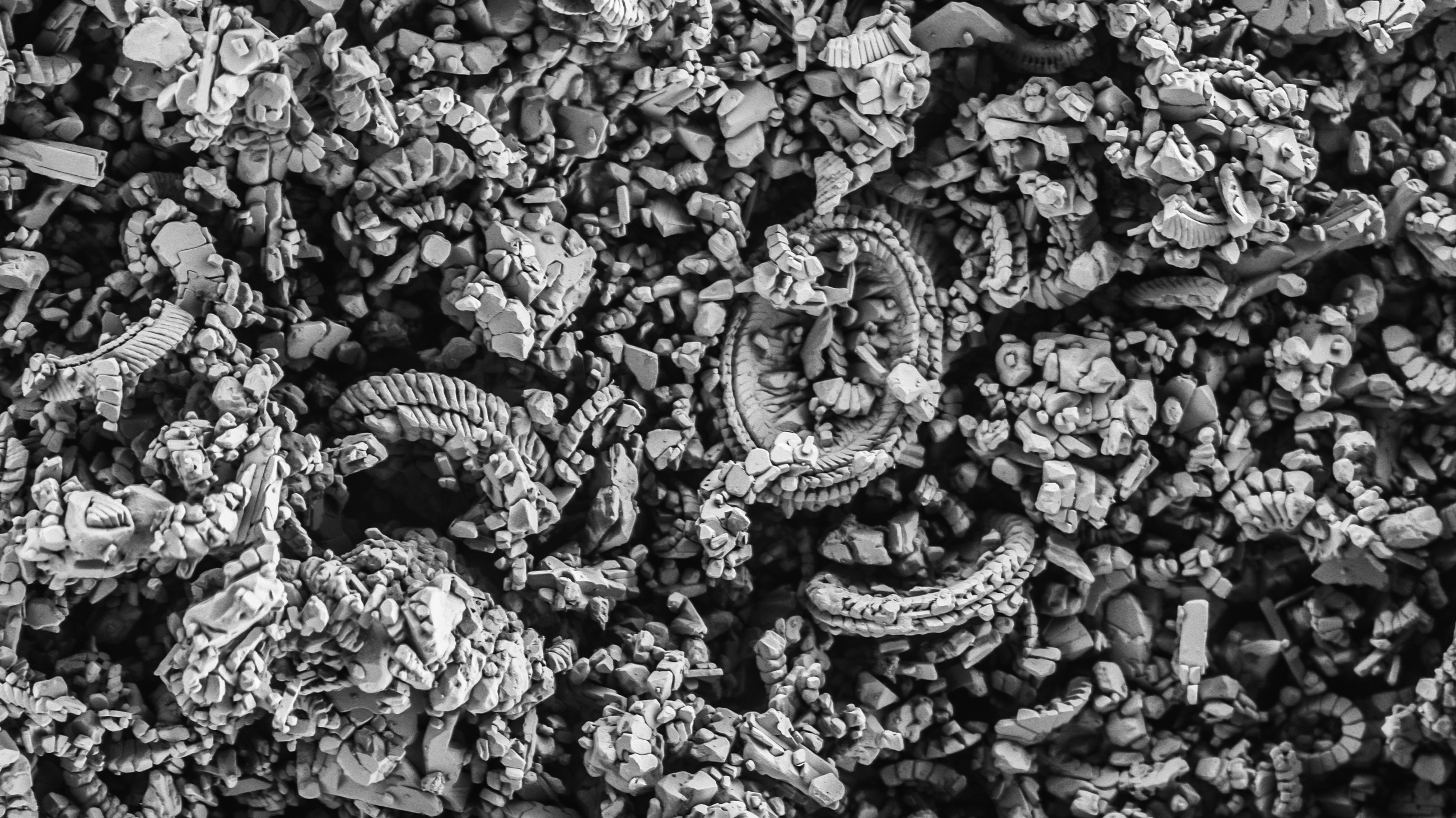
Coccolithophores are microscopic photosynthetic plankton that construct intricate shells for themselves out of calcium carbonate plates. By drawing colossal amounts of calcium and carbon out of seawater for their shells, these and other calcifying plankton have altered the flow of these elements through the oceans.
Introduction
Evolution is usually depicted as a consequence of the never-ending war between living things — a “Struggle for Existence amongst all organic beings,” as Charles Darwin put it. The physical environment around those living things plays a part, but it’s secondary to the intimate relationships that organisms have with one another. Whether talking about symbioses or the ongoing competitions between species called Red Queen’s races, researchers largely take it for granted that ecological relationships are the primary force of evolution.
But in the grand scheme of life, that may be a surprisingly recent development. In the oceans, for example, ecological success was closely tied to the inanimate forces steering ocean chemistry until only about 170 million years ago.
Complex organisms had been evolving since at least the beginning of the Cambrian period. “That’s, what, 300 million years of evolution in the Paleozoic? And all that time they were still so susceptible to these very basic geochemical shifts,” said Kilian Eichenseer, a doctoral candidate at the University of Plymouth. But as he, his adviser Uwe Balthasar and their colleagues showed in a recent paper in Nature Geoscience, that all changed when certain tiny marine creatures emerged in the Jurassic — and evolution in the ocean was never the same again.
A Plankton Revolution
About 250 million years ago, at the end of the Permian period, life on Earth suffered an unprecedented blow. Something — massive volcanic activity in what are now the Siberian Traps is the likeliest culprit — devastated the global ecosystem and eliminated 90% or more of all marine species and upward of 70% of those on land. The nearly cleaned slate marked the dawn of a new era: the Mesozoic.
Life was slow to recover, and for the first few tens of millions of years, the seas were dominated by groups of animals like the tough, thick-shelled brachiopods, ammonites and mollusks, some of the scant survivors of the Permian extinction. In the middle of the Mesozoic, however, the ocean began to teem with agile animals that had much thinner shells. “If you look at the fossil record, we see animals becoming bigger, becoming more active — predators become more fearsome,” Eichenseer said.
This dramatic shift in marine life came to be known as the Mesozoic marine revolution. And it was in this time of renewal that a new kind of life emerged: the calcifying plankton — a diverse classification of tiny organisms that build shells or skeletons of calcium carbonate.
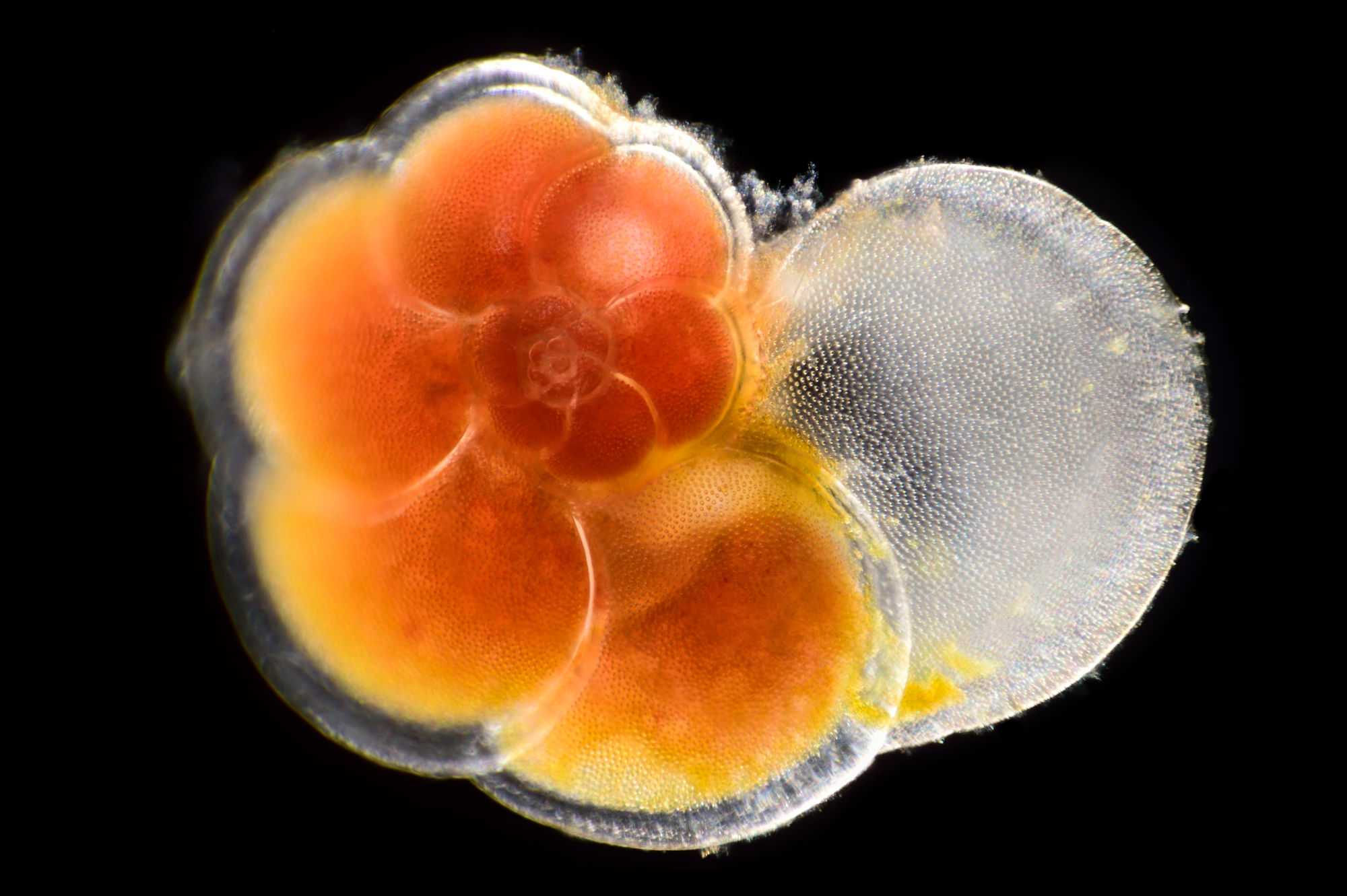
This foram, or member of the plankton group foraminifera, is a single-celled marine animal that lives inside a protective chalky shell.
It’s not clear why groups like coccolithophores (single-celled plantlike organisms) and foraminifera (tiny amoeboid animals in shells) evolved when they did, roughly 80 million years after the mass extinction. The advent of biomineralization in the early Cambrian opened up significant new options for living things, so in that sense, it’s not surprising that new species evolved and took advantage of the opportunity to calcify. Hard shells do help protect an organism against predation and other physical harm, after all. They can also act as a protective barrier against DNA-damaging ultraviolet rays. Moreover, at that time, there was a lot of dissolved carbonate in the water (the corals and bivalves that lived before the calcifying plankton didn’t remove very much of it), so the abundance of carbonate as a resource could have facilitated the development of calcification pathways.
But calcifiers face serious risks. As a group, they’re very sensitive to changes in ocean chemistry. To make their shells, they must pull calcium and carbonate ions from seawater — a process that becomes harder when that water becomes more acidic. Worse, if the water becomes acidic enough, those calcium carbonate shells start to dissolve.
That’s why mass marine extinctions have often been linked to geological or climatic events that cause the pH of the ocean to fall. Volcanic activity, in particular, tends to release a lot of carbon dioxide into the atmosphere, and as the gas diffuses into the oceans, it turns waters more acidic. Between the Ordovician period, about 485 million years ago, and the early Jurassic, about 170 million years ago, there was abundant volcanic activity, which led to the extinction of many, many marine species. During that time, organisms thrived or died mostly based on factors beyond their control.
But since the middle of the Jurassic, that hasn’t really been the case. “There was still volcanism, but that was usually not anymore accompanied by an extinction event,” Eichenseer explained. He suspects that the credit for life’s new resilience probably goes to those plankton — especially the ones that died.
That’s because layers of dead carbonate organisms on the seafloor can dissolve when the seawater pH starts to drop, and the released carbonate ions then raise the pH again. Places where there is an abundance of dead carbonate organisms have always acted as a buffer to stabilize the ocean’s chemistry. But before these calcifying plankton appeared, this carbonate buffer was restricted to shallow continental shelves. There simply wasn’t enough chalky floor space to buffer against the extreme changes in acidity from volcanoes or other geological events.
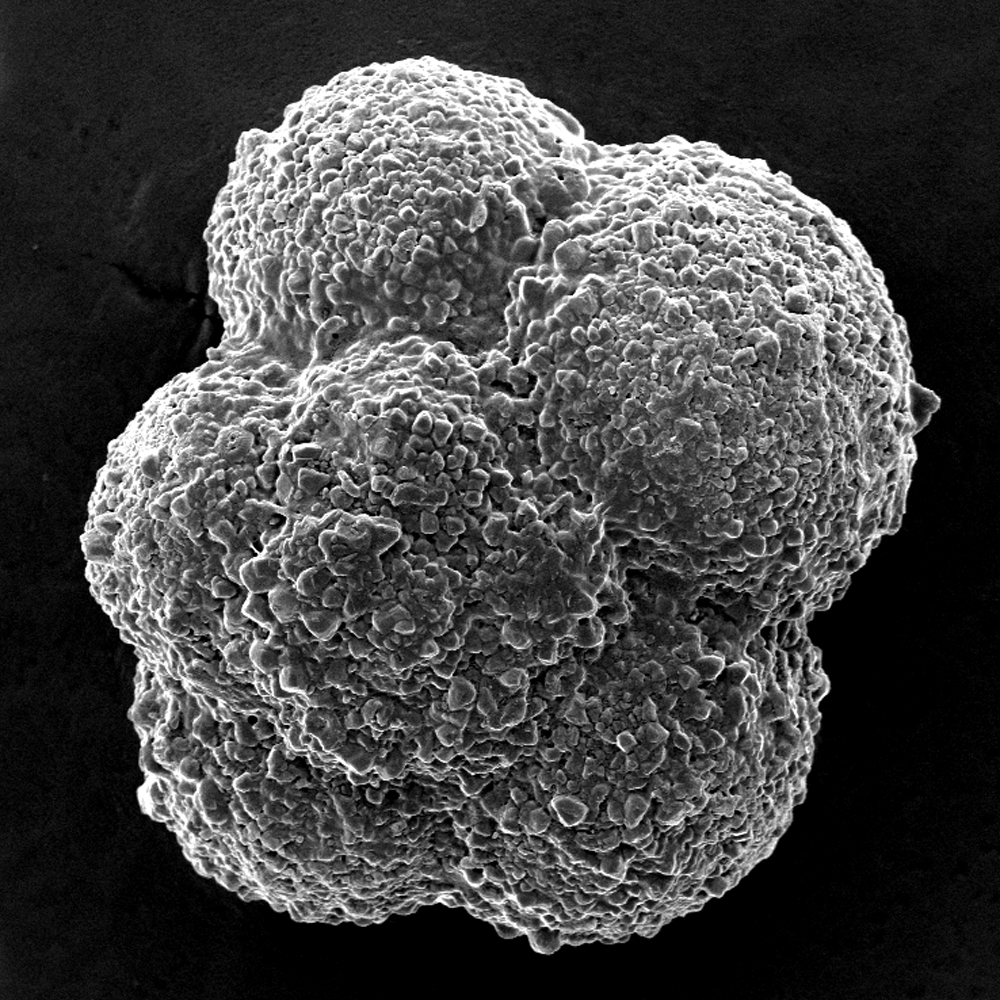
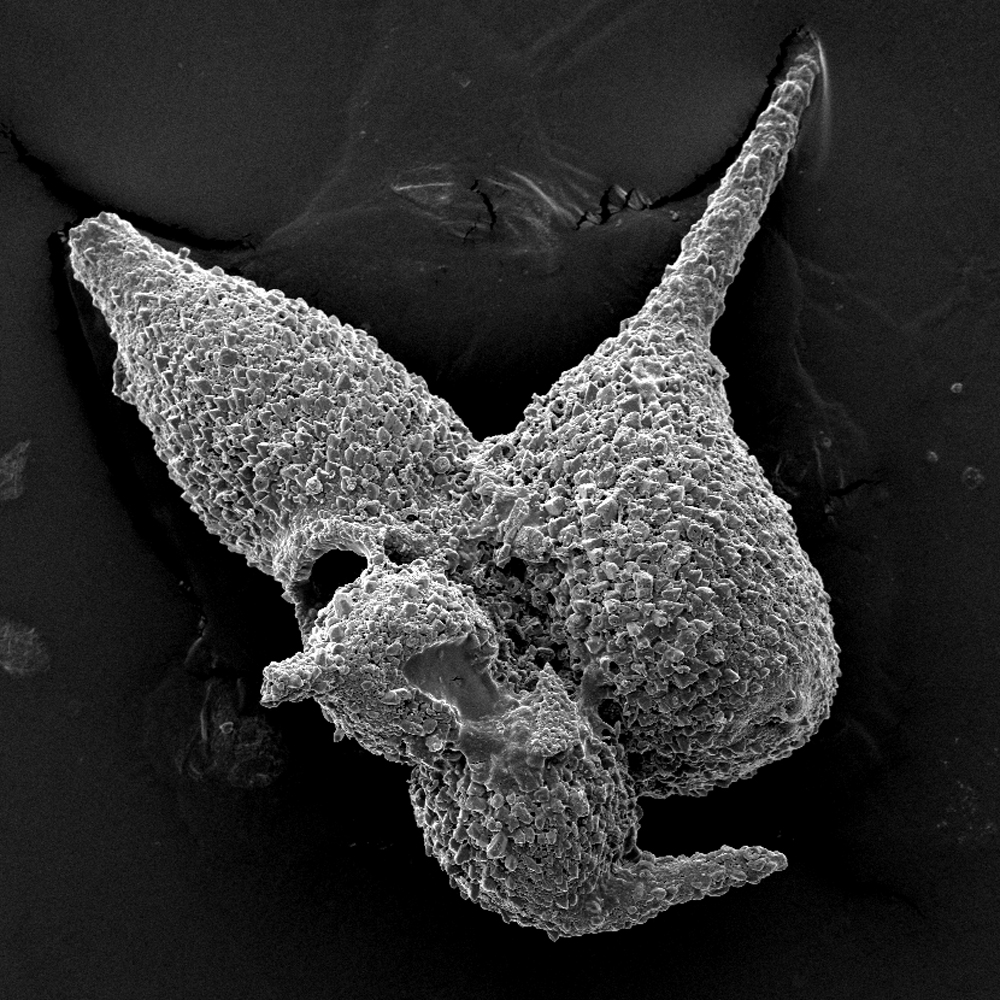
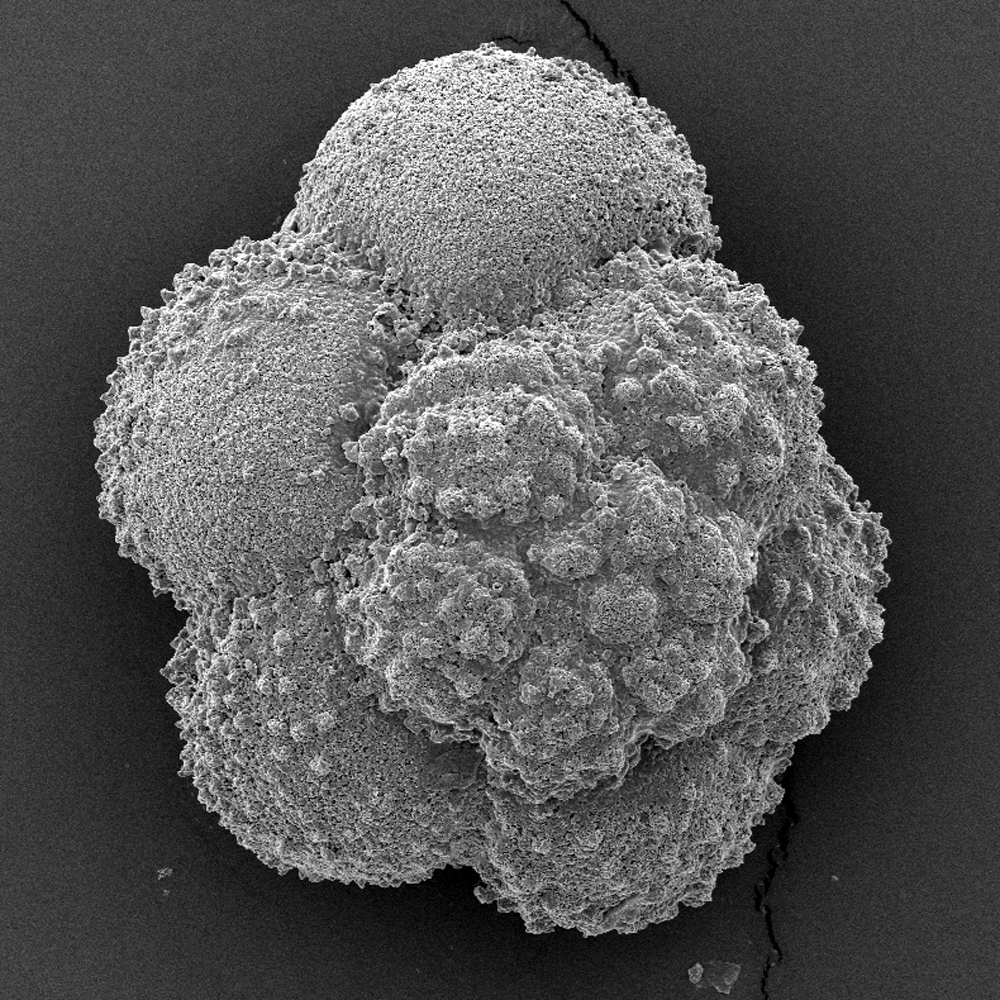
These specimens of calcifying plankton date back 95 million years. Top to bottom: Whiteinella archaeocretacea, Schackoina cenomana and Whiteinella brittonensis.
Courtesy of Jodie Fisher
These specimens of calcifying plankton date back 95 million years. Left to right: Whiteinella archaeocretacea, Schackoina cenomana and Whiteinella brittonensis.
Courtesy of Jodie Fisher
Then the calcifying plankton took over. Nowadays, you’d be hard-pressed to find ocean waters less than 100 meters deep that don’t contain calcifying plankton. Despite their teeny size, they may account for nearly 12% of the total biomass in the oceans. And they’ve completely altered the way carbon moves around the planet. About 80% of the carbon-containing rocks on Earth are derived from the remains of these plankton and other marine calcifiers — even though by mass, these plankton may account for less than 0.2% of Earth’s carbon-containing life.
“All of a sudden you have all these little teeny tiny carbonate organisms that together add up to this huge carbonate sink that draws a ton of calcium carbonate out of the ocean, and as is articulated nicely in the paper, changes the dynamics of where that carbonate is deposited,” said Rowan Martindale, a paleoecologist at the University of Texas, Austin. “And so it really fundamentally changes how the ocean buffering capacity works.”
Making the oceans more stable didn’t just benefit the calcifying critters. With so many species less likely to become extinct at the planet’s whim, all marine species were able to relax and take the time to evolve complex relationships with others. That’s why life became bigger, faster and more aggressive: What had been a struggle against the planet became a struggle between organisms.
Tipping the Balance
The idea that calcifying plankton transformed marine life isn’t entirely new. “The Mesozoic marine revolution is a pretty fundamental change in how the oceans operated,” Martindale said. She noted that, for over a decade, there’s been a general consensus in the paleontology community that the rise of calcifying plankton fundamentally changed ocean chemistry and allowed an entirely new suite of organisms to emerge and dominate. But until recently, no one had tested the idea empirically.
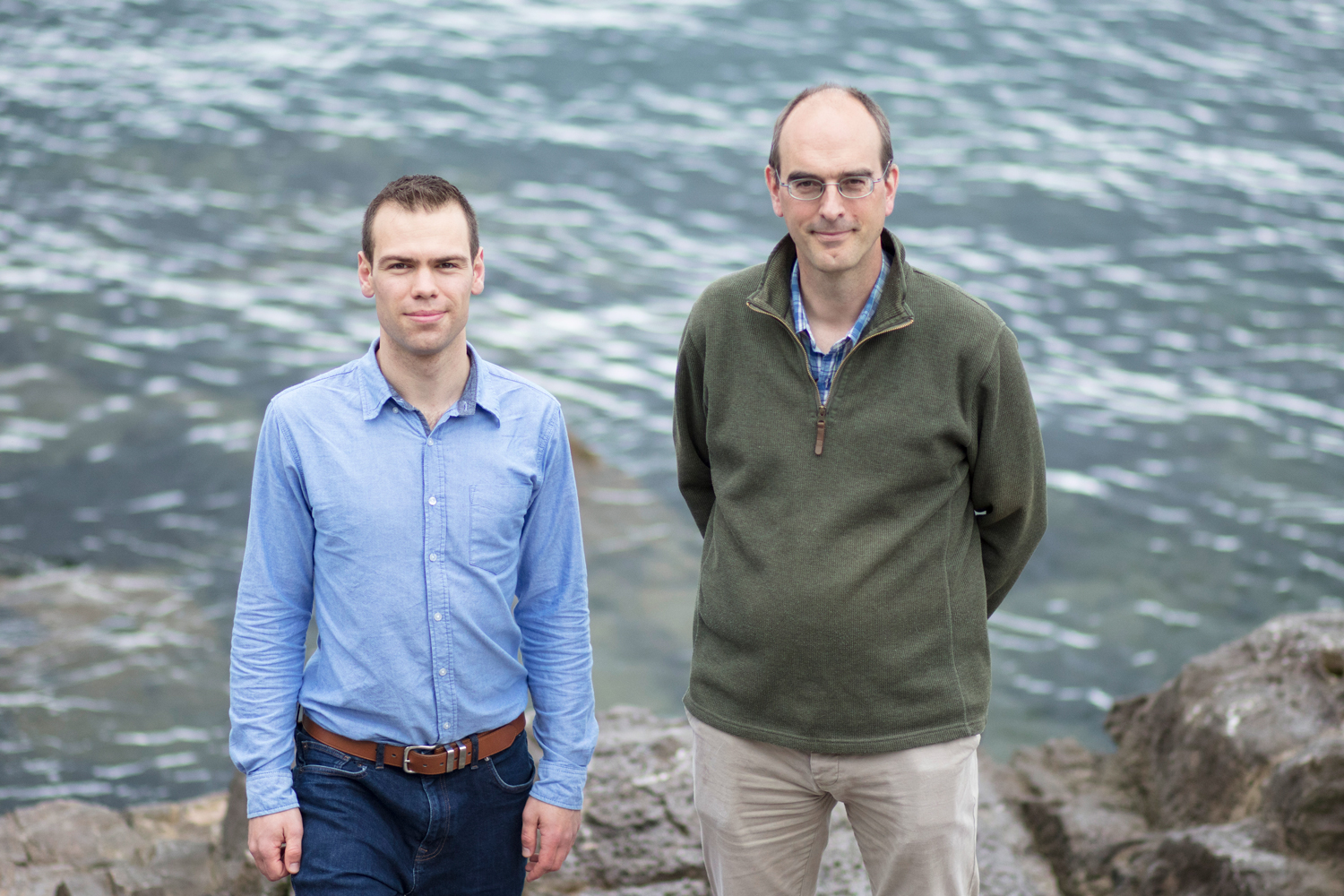
Research led by Kilian Eichenseer (left), a doctoral student at the University of Plymouth, and his adviser, Uwe Balthasar, shows that the ancient ecological upheaval called the Mesozoic marine revolution coincided with the proliferation of plankton that secrete calcium carbonate to make shells.
Alan Williams
Eichenseer and his colleagues did just that. First they pulled together information on 450 million years’ worth of non-planktonic marine calcifying organisms — that is, animals like bivalves, brachiopods, gastropods, cephalopods and corals, as well as species of calcifying algae that don’t count as plankton. Then they compared the success of the different organism groups in dealing with two major environmental variables: ocean temperature and magnesium concentrations. When temperatures or magnesium concentrations are high, organisms that build a particular form of calcium carbonate called aragonite have an easier time. Cooler, lower-magnesium waters make life simpler for calcite-making creatures.
As Eichenseer explained, if environmental variables were the dominant driver of evolution, you’d expect to see the relative success of aragonite- and calcite-making organisms follow ocean chemistry. And that’s exactly what he and his team saw — until 170 million years ago, when calcifying plankton became widespread. Then the organisms abruptly decoupled from fluctuations in the temperature and magnesium levels, and aragonite organisms began to dominate despite unfavorable conditions.
The researchers weren’t able to demonstrate conclusively that the plankton caused this shift, but they argued that simply by existing — and dying — in such huge numbers in deeper waters, these creatures created a deep reserve of carbonate that could then dissolve to buffer ocean chemistry whenever environmental changes pushed seawater to become more acidic.
As Eichenseer and his co-authors noted in the paper, the ocean’s calcium cycle wasn’t the only thing this explosion in calcifying plankton would have changed: Because of knock-on effects, virtually the entire marine ecosystem would have changed. Dying plankton drop toward the sea bottom in a steady rain; their decomposition is a process that depletes seawater of dissolved oxygen. But because calcifying plankton are relatively heavy, they sink into the depths before they fully decompose, leaving more oxygen in shallow waters. That change might have increased the range of organisms that could live along continental shelves and made them less vulnerable to other environmental changes. Metabolic rates could have risen, furthering the trend toward more active marine life. Past explanations for the Mesozoic marine revolution have often hinged on the emergence of new predators, like the placodonts and the ichthyosaurs, that could crush the shells of their prey, but it’s possible that those predators were themselves taking advantage of a new ecological regime that the calcifying plankton made possible.
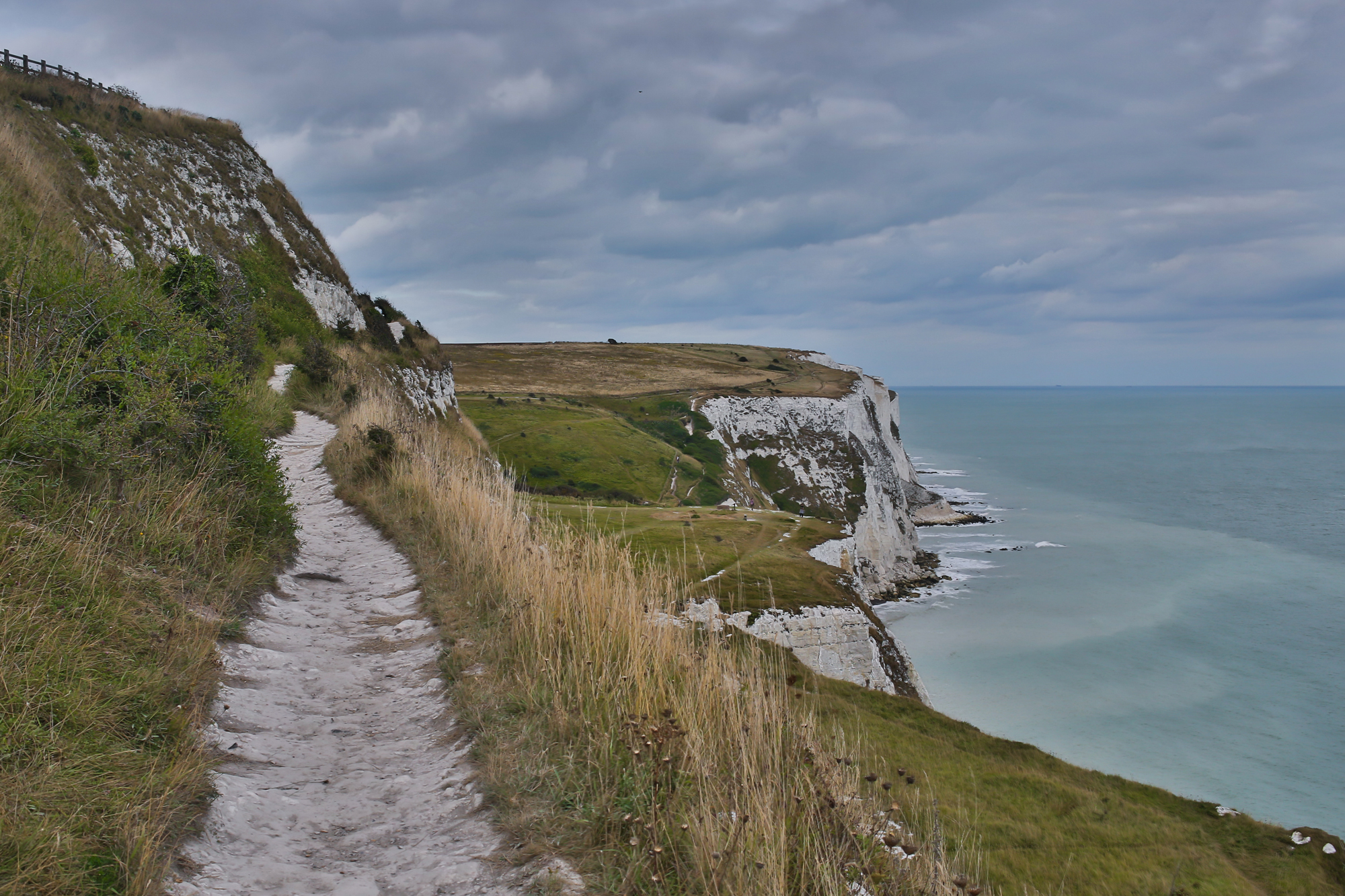
The famous chalky cliffs of Dover on the English coastline consist of the uplifted remains of calcifying plankton that died and sank to the sea bottom during the Cretaceous, between 145 million years ago and 66 million years ago. The cliffs represent a layer of their carbonate shells about 100 meters or more thick.
Pamela Hallock Muller, a biogeological oceanographer at the University of South Florida, said she found the idea that calcifying plankton changed ocean chemistry “very interesting, very logical and very intriguing.” She acknowledged that she “had not thought about the buffering of the oceans in quite that way,” and that the arguments presented in Eichenseer’s paper seem “pretty solid.” Still, she wondered if the evolutionary regime shift was really a dramatic one or more of a slight nudge. Buffering could have played a part, but so would the mere existence of new edible organisms in the middle of the ocean — a habitat previously lacking an abundance of life.
This likely wasn’t the first or only major evolutionary regime shift driven by life, after all. Photosynthetic organisms and the oxygen they produce are thought to have played a key role in the sudden expansion of life forms during the Cambrian explosion— though there’s some debate as to just how sudden and expansive that “explosion” really was. And it’s thought that similarly drastic changes must have happened on land at some point, though the fossil record for land organisms is much less detailed, so testing hypotheses regarding evolutionary drivers is much more difficult.
Eichenseer also notes that the plankton didn’t exactly rewrite the laws of evolution — they just tipped the balance that made biotic interactions like competition and predation more important. “Earth’s life systems stabilized. And these environmental perturbations, they still happened, but life was prepared.”
Ever since, evolution in the oceans has remained more biotically driven, which might explain why abiotic events like rapid climatic changes or volcanic eruptions have been less devastating than before. There have been notable exceptions, of course, like the dinosaur-destroying asteroid impact that spurred a mass extinction at the end of the Mesozoic. But overall, life itself has played a bigger role in deciding what marine life forms survive or disappear.
That doesn’t mean it will forever, though. This biotic dominance is dependent on oceanic plankton, so it isn’t guaranteed — a fact that should perhaps be troubling, given how the abundance and distribution of these organisms is being altered by anthropogenic climate change. If the production of calcifying plankton were to break down, perhaps because of destruction by the acidifying oceans, “then we could hypothetically slide back into that more ancient evolutionary regime,” Eichenseer said.





